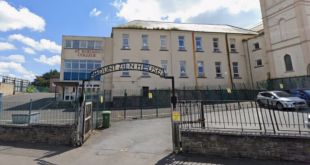
I’ve decided to take up a new lockdown hobby.
A lot of people seem to have done this. Mrs Canavan has started relaxation meditation which, as far as I can tell, seems to involve lying on the lounge floor with her eyes closed and a faraway look on her face listening to an Aboriginal band perform Dancing Queen on pan pipes; my cousin has got into cycling, though she’s had to give up because it was playing absolute havoc with her piles; and Geoff – the slightly odd-looking bloke who lives at number 25 – has begun naked gardening, though this badly backfired on Tuesday when he had an unfortunate accident with his secateurs. Doctors say he’ll recover, but it’s unlikely he’ll ever become a father.
I, meanwhile, have decided to try and learn about one new topic each week.
The primary reason for this is so I might improve at the weekly online quiz we have with our friends (I’ve come last now five weeks on the bounce, though this is less to do with my intellect and more that the last five quizzes have coincided with live football matches on the tele).
But it’s also to give me something to write about here.
This column, as the seven or eight people who’ve read it over the last few years will attest, is about my life. But the problem with a lockdown is that other than going to buy bread and milk from Sainsbury’s a couple of times a week, absolutely nothing happens anymore. Like most others (with the exception of Dominic Cummings and Premier League footballers), I can’t go anywhere or see anyone. The most exciting part of the day is when the Amazon delivery man inevitably drops off a parcel (inevitable because Mrs C cannot go online without ordering some useless overpriced rubbish for the children; just this morning a big parcel arrived containing unicorn cup-cake cases – I rest my case). I see the Amazon guy so often – Dave to give him his name – that I know he has three children, used to work as an accountant but took early retirement, and after failing a recent breathalyser test is currently banned from driving … although he asked me to keep that last bit secret from his employee, so mum’s the word.
In a nutshell nowt happens, so as a result I have nothing to write about – hence me deciding to learn a new thing on a weekly basis simply to fill this page.
So, this week I’ve learned about – hold on to your hats – postcodes.
I can tell what you’re thinking. Boring, I’m stopping reading right now.
But hang on a mo, give me a chance. I mean have you really thought about them before, why they exist or how they begun? I know I haven’t, mainly because like grass, or clouds, or David Attenborough, they’ve just always been there.
But here’s the thing – they’re really quite interesting, and they involved a lot of planning and research by some of the cleverest people in the country.
When the Post Office introduced them at the end of the 1950s – to cope with a surge in letters being sent, combined with the advent of machines being used to sort post rather than people – they asked psychologists at Cambridge University’s Cognition and Brain Sciences Unit to devise a memorable code.
The boffins knew a person’s average short-term memory has a capacity of between five and seven pieces of information. But they soon realised number-only codes were too difficult, so opted for a mix of digits and letters. According to a writer called Marc Smith (from whom I learned the story of the postcode), the researchers realised the first half of the code had to be the most important and most memorable, so if there were errors in the second half of the code, the letter would still get to the right area.
Thus they came up with something we now take for granted, that each postcode would begin with the city/town name, such as M for Manchester or PR for Preston or OX for Oxford.
The second half of the code consists of one digit and two letters, corresponding to the street. The number is placed in the middle because it stands out and can assist with recall, acting as cue for the final two letters where errors are most likely to occur.
The system dreamed up all those years ago by the scientists clearly works, for according to a Royal Mail survey, 92 per cent of people can recall their home postcode and a big chunk of folk can still recall the code of the house they lived in 30 years ago.
Apparently you can send a letter by using just the house number and the postcode (though this is frowned upon by Royal Mail) and although originally introduced to speed up sorting, postcodes have become a vital part of our everyday lives, from sat navs to ordering takeaways.
Now come on, can you honestly look me in the eye and tell me you didn’t find that interesting?
Oh, and just in case it comes up in your next online quiz – where and when was the first postcode in Britain used?
Your friends will be either incredibly impressed at your knowledge, or think you need to get out more.
Source link


